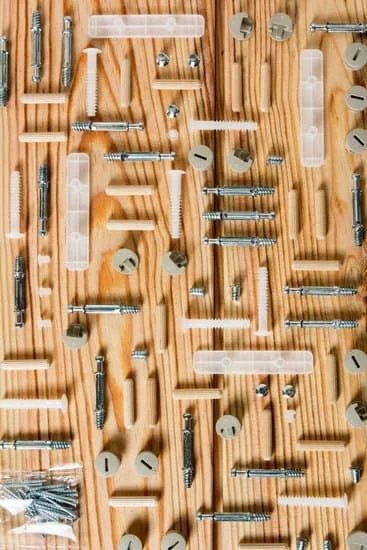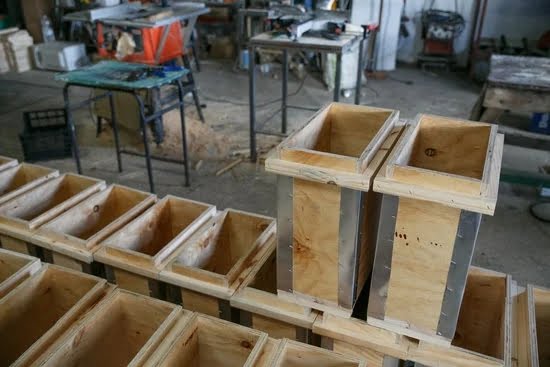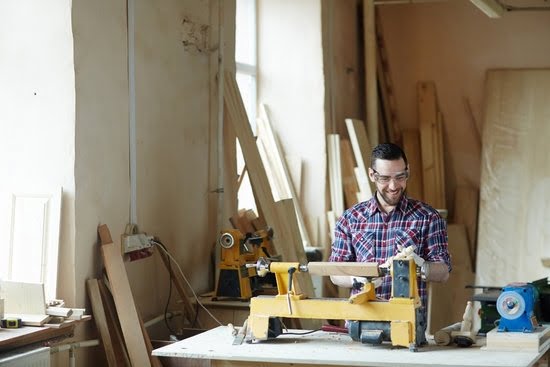Introduction
Woodworking hand tools have been used to shape wood for centuries and can be divided into roughly two categories: cutting tools and forming tools. Cutting tools are those that are used to shape a piece of wood by cutting it, such as saws, chisels, gouges, and planes. Forming tools are those that affect the form or texture of a piece of wood, such as rasps, drawknives, spokeshaves, and shaping planes.
The essential hand tools for woodworking each have their own unique purpose and range from antique-style hand planes for smoothing finely crafted furniture surfaces to basic saws for making quick cuts in thick pieces of timber. For example, one type of cutting tool is the circular saw ” an indispensable tool which makes rapid cuts through different hardness and thicknesses of material with minimal effort.
An important thing to keep in mind when using hand tools is safety. Eye protection must be worn when using chisels to avoid any chips flying up into your eyes. In addition it is best to always use sharp blades that have been properly maintained, as dulled edges can cause more harm than good.
Woodworking Hand Tools provide the user with the ability to shape wood quickly without relying on electricity or motors; they are also easier to obtain in comparison to power drills since they do not require purchasing additional parts or accessories needed for safe operation. Additionally their affordability enables both amateur and professional woodworkers an accessible means of starting out or adding on to existing workstations or workshops in smaller scale projects. Woodworking Hand Tools offer precision that machine-made power drills lack; making creative adaptations easier in order yield unique shapes and carvings with intricate detail due its hands on nature allowing for individualized pressure adjustments allowing high dynamic control over every cut resulting in aesthetically pleasing craftsman style curves.
Types of Hand Tools
Hand tools are essential for any woodworking project, and include a wide range of items designed for cutting, measuring, marking, shaping and more. A few of the most popular hand tools used in woodworking include saws, chisels, planes, routers, hammers, drill bits and braces.
Saws are used to cut throughboard materials or create precise joints or grooves. There are a variety of saw types available depending on the job: back saws (with stiffer blades), crosscut saws (for accurate cuts across widths) fretsaw blades (for delicate work such as installing lap joints) coping saws (designed for curved cuts).
Chisels come in many shapes and sizes and can be used to remove waste material from various surfaces. Planes are useful for flattening a board’s surface or its edges. Flattening is also possible with a router which is used to shape wood by cutting away excess material. Hand drills can be used to bore holes while a hammer is used to drive nails into the boards. Finally braces provide torque when manipulating screws or other fasteners joining bodies together.
Using hand tools has several advantages compared to power tools -they require less space for storage and do not need an external power supply; they have longer lifespans since their moving parts wear less than their electrical equivalents; more importantly they offer greater control over how the pieces fit together as well as how much material remains in each part so that joinery is stronger and lasts longer.
Selecting the Right Hand Tools for Woodworking
Before beginning any woodworking project, it’s important to ensure you have the right hand tools for the job. A basic set should include a hand saw, chisels, a hammer, and a screwdriver. For more detailed projects requiring precision cuts, such as making cabinets or furniture, it would be wise to invest in some specialty hand tools like a compass or dividers. Other useful items that can come in handy are tape measures, mallets, and knives. The type of material being worked with also means different specialized tools may be needed. For instance, if working with soft woods then lightly serrated saw blades will provide better results than those specifically designed for hardwoods.
It’s also important to protect your hands when using these tools. Always wear safety goggles during operations such as cutting with a saw. Gloves can protect against blisters caused by forms of manual labour such as sanding and using the chisels or hammer for many hours at once without interruption. Additionally, an adjustable wrench and bench vise can be valuable additions to your tool collection which will help lessen the some of the strain from various woodworking activities. And don’t forget about oils that lubricate crucial components on various types of machinery including woodworking machinery. Having all these great hand tools may not mean much if they require maintenance or don’t function properly due to inadequate oiling!
Caring for Your Hand Tools
When caring for your woodworking hand tools, it is essential to follow some simple guidelines to ensure they last a long time and remain as sharp and effective as possible.
One of the most important things is to keep them clean. Wipe off any debris or sawdust after you’ve finished using them. This will prevent rust from developing on the tool surfaces. You should also use a light oil to lubricate the blades in order to prevent corrosion.
When you’re not using your tools, it’s important to store them properly. Make sure that moisture can’t get into the steel blades, as this can cause rust and staining of the metal. Consider using tool rolls or bags for added protection during storage.
Once a year, it’s recommended that you take apart each tool, scrub off any dirt or residue which has accumulated over time and reapply mineral oil to keep the cutting edges sharp and protected from moisture. If applicable, you should also lightly sharpen up chisels and planes with sandpaper or a wet stone when needed.
Safety Considerations
When using hand tools for woodworking, it is important to take all necessary safety precautions. Before beginning any woodworking project, proper protective eyewear and clothing should be worn. Safety glasses are a must – however, if there is any dust or flying fragments from the workpiece, goggles are recommended instead of glasses. A face shield may also provide adequate protection.
In addition to appropriate eye protection, it is best to dress appropriately when using hand tools. Loose-fitting clothing can easily get caught in moving machinery and cause injury, therefore it is essential to wear snug-fitting attire such as jeans or trousers and a close-fitting shirt or coat as well as heavy leather gloves. Long hair should also be tied back securely so that it does not become entangled in the drill bit or other power tool part. A few more considerations: no jewelry should be worn in the workshop since it can become tangled up with the workpieces; use non-slip footwear such as boots with steel toes; finally, keep your hands away from blades and other potentially hazardous parts of the machines. Error on the side of caution when utilizing tools – don’t attempt something that feels dangerous!
Conclusion
Essential woodworking hand tools are a must-have in any woodworking project. They provide precision and accuracy that machines can’t always replicate, and the satisfaction of creating craftsmanship by hand. With proper care, these tools can last you a lifetime. Store your tools in a safe place when they’re not being used, use the right accessories that come with each tool, such as saw blades and drill bits, keep them sharp and clean them regularly. Additionally, it’s important to keep safety considerations in mind whenever using essential woodworking hand tools; use protective gear like safety glasses and gloves, read all instructions before using the tool, be aware of how far it can reach to avoid hazardous situations, and never leave the tools unattended while they’re turned on. By taking the appropriate measures to care for your essential woodworking hand tools, you will ensure long-term life ensuring accuracy and enjoyment from your projects for years to come.

Hi everyone! I’m a woodworker and blogger, and this is my woodworking blog. In my blog, I share tips and tricks for woodworkers of all skill levels, as well as project ideas that you can try yourself.





